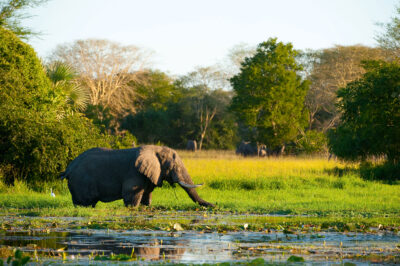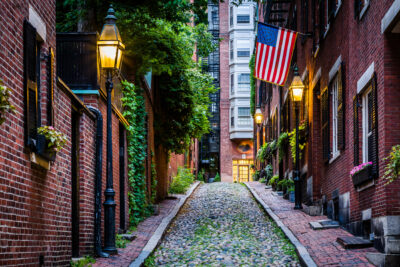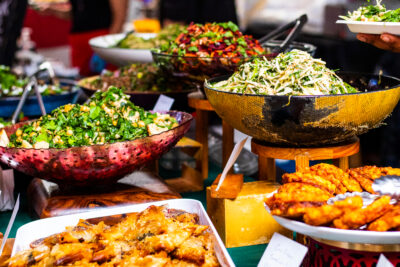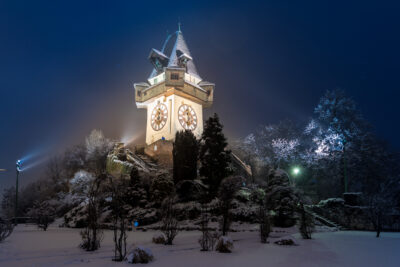
5 German dishes and staples and where to try them
While the clichés of pork-heavy Teutonic fare aren’t too wide of the mark, Germany has a culinary variety and dining scene that, like its UNESCO-listed bread, makes it a European heavyweight…
Not many visitors travel to Germany for the food, which is surprising when you put aside preconceptions and look deeper. Its restaurant scene alone is a juggernaut: Germany came fourth in a 2022 list of countries with the most Michelin stars (behind only France, Japan and Italy), and claimed nearly twice as many as the UK (down in seventh). Its reputation for calorific, meat-heavy cuisine and starches is deserved, but what it does, it does well, and at a good price.
If you don’t eat pork you may struggle for menu options, although venison – much of it imported from Scotland – is the fancy choice in many restaurants nowadays. However, vegetarian dishes are increasingly common, and the choice of international offerings (traditionally just Turkish or Greek) has diversified, so even an industrial city such as Düsseldorf has its own ‘Japan street’, with sushi and ramen joints accompanying Vietnamese and Thai eateries.
But what really makes Germany stand out is its bread (brot) culture, which was recognised by UNESCO in 2014. Meals, such as morgenbrot (breakfast) and abendbrot (dinner), were historically geared around this staple, and there is even a pair of dedicated bread museums to visit – one in Ulm, another in Ebergötzen. Today, Germany has over 3,000 varieties of bread; almost every village has its own bakery, and it’s traditional to buy fresh brötchen (rolls) in the morning. Often these bakeries are social hubs, too, offering cheap coffee and a basic dish of the day, making them a great way to taste a variety of local flavours.
5 staples in German cuisine and where to try them

Most Sauerbraten is made with roast beef (Alamy Stock Photo)
1. Sauerbraten
Many a town centre still has its rathaus – town hall – complete with ratskeller (basement bar) underneath. Here you will find traditional dishes served on heavy oak tables under vaulted ceilings. The dish sauerbraten often tops the menu, its centrepiece being a tender cut of roast meat – typically beef, but also pork, lamb or venison – which has been marinaded in vinegar. Ideal for cold winter days, it is usually served with a heavy dark gravy, dumplings and spiced red cabbage. Try it in the Munich Ratskeller.

Labskaus is often topped with a fried egg (Alamy Stock Photo)
2. Labskaus
This inexpensive favourite is popular in traditional seafaring communities along the coast. It has its origins in shipboard imperishables – mashed potatoes, corned beef, pickled beetroot – and is often topped with a fried egg and garnished with a gherkin and a rollmop herring. To honour its seafaring origins, it is best eaten in the likes of Hamburg’s Alt Helgoländer Fisherstube on the banks of the Elbe; this lies not far from the Fish Market, which comes to life on Sunday mornings.

Germany has thousands of wurst (Alamy Stock Photo)
3. Wurst
Germany’s 1,200 varieties of sausage (wurst) are surprisingly regional, even if Berlin’s currywurst – a bratwurst smothered in ketchup and chilli powder – is virtually a national dish. The best of the wurst depends on which side of the white sausage equator you belong: south of Frankfurt champions weisswurst, a white sausage usually made with veal. Also in the south, in Regensburg, you can find finger-sized bratwurst being grilled by the thousand at the 500-year-old sausage kitchen by the Stone Bridge. It’s basically an ancient shed, but what it serves is simple, tasty and best eaten with sauerkraut.

Spargel (asparagus) even has its own festivals in Germany (Alamy Stock Photo)
4. Spargel
Every spring, from mid-April until late June (‘when cherries are red, spargel is dead,’ goes the saying), Germans consume a staggering 70,000 tonnes of asparagus (spargel). It is white, not green, because it is harvested whilst it is still underground, and is often steamed, daubed with butter and served with new potatoes. The town of Schwetzingen, near Stuttgart, is host to one of several asparagus festivals and is also the gateway to the Baden Asparagus Road, a 136km route through growing country.

Käse is mostly produced by the milk of cows who reside below the Bavarian alps (Alamy Stock Photo)
5. Käse
The foothills of the Bavarian Alps are dotted with käserei, cheese-making dairies producing milk from cows that graze on herb-rich alpine meadows. Their products are local and distinctive: try garlic and chive-flavoured camemberts, hay milk and walnut bries, and hard cheeses matured with elderflower and encased in meadow blossom. Visit the Schönegger Käse-Alm, near Rottenbuch, a converted farm not far from the mountains that runs its own cheesemaking courses.
Did you know…
Germans have teatime too, but they call it kaffee und kuchen (coffee and cake), a social ritual for friends and family usually taken at 3pm. Many a café will have a special deal, pairing the likes of mohn (poppyseed) cake, Black Forest gateau, cheesecake, butterkuchen and marmorkuchen (a chocolate and vanilla marble cake) with fresh coffee. If you’d prefer tea, ask for East Frisian; it is aromatic and usually served in delicate chinaware.


















